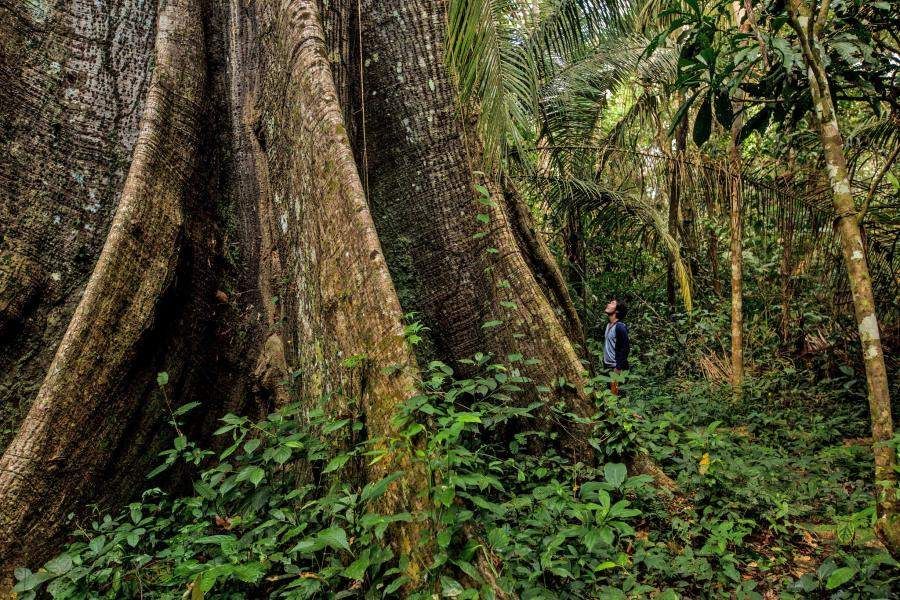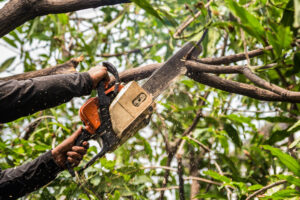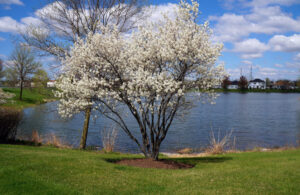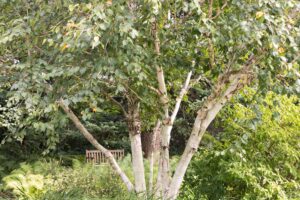As wildfires intensify across the United States, understanding the factors that contribute to their spread has become a top priority for ecologists and land managers. Among these factors, dead trees—also known as “snags”—play a significant role in fueling wildfires. According to Dr. Jennifer Balch, director of the Earth Lab at the University of Colorado Boulder, “Dead trees are a double-edged sword. They provide critical habitat but also increase the risk of catastrophic fires when not managed properly.”
Why Do Dead Trees Contribute to Fire Risk?
Dead trees are a natural part of forest ecosystems, resulting from factors such as disease, drought, insect infestations, or previous fires. While they serve ecological purposes, their contribution to wildfire fuel loads stems from their unique characteristics:
- Low Moisture Content: Dead trees lose moisture over time, making them highly flammable compared to live trees.
- Accumulated Debris: Dead branches and leaves accumulate around and beneath the tree, increasing available fuel.
- Vertical Fuel Continuity: Snags can act as “ladder fuels,” carrying flames from ground fires into the canopy.
These factors combine to make dead trees a key component in wildfire dynamics, particularly in areas experiencing prolonged drought or poor forest management.
Ecological Benefits of Dead Trees
Before addressing their role in wildfires, it’s important to recognize the ecological value of dead trees. They:
- Provide Wildlife Habitat: Many bird species, such as woodpeckers, use snags for nesting and foraging.
- Enhance Soil Health: As dead trees decompose, they release nutrients back into the soil, fostering new growth.
- Support Biodiversity: Dead trees create microhabitats for insects, fungi, and small mammals.
Balancing these ecological benefits with the need to reduce wildfire risks is a complex challenge for forest management.
Dead Trees and Wildfire Dynamics
1. Increased Fuel Loads
Dead trees significantly contribute to the total fuel load of a forest. When a wildfire ignites, the dry, flammable wood can sustain high-intensity flames, making suppression efforts more difficult.
2. Ladder Fuels and Crown Fires
The structure of dead trees often allows fires to climb from the forest floor to the canopy. This phenomenon, known as a crown fire, is particularly destructive, as it spreads rapidly and is harder to control.
3. Long-Term Fire Hazards
Unlike fine fuels like grass or leaves, dead trees can smolder for days, reigniting fires even after initial suppression efforts. This persistent threat complicates firefighting strategies.
Managing Dead Trees to Mitigate Fire Risks
To balance ecological benefits with wildfire prevention, effective management of dead trees is crucial. Here are some strategies employed by land managers:
1. Selective Removal
Removing dead trees in high-risk areas, such as near homes or infrastructure, can reduce fuel loads. This method, known as snag thinning, targets trees that pose the greatest fire hazards.
2. Controlled Burns
Prescribed burns can safely reduce the accumulation of dead wood and other fuels. By mimicking natural fire cycles, this method helps maintain forest health while lowering wildfire risks.
3. Creating Defensible Space
In wildfire-prone areas, creating a buffer zone free of dead trees and other fuels around structures can significantly improve safety. This practice, often recommended by programs like Firewise USA, is critical for protecting communities.
4. Promoting Natural Decomposition
In less risky areas, allowing dead trees to decompose naturally can provide ecological benefits without increasing fire hazards. Monitoring and periodic assessments ensure this strategy aligns with safety goals.
The Role of Climate Change in Dead Tree Accumulation
Climate change is exacerbating the problem of dead tree accumulation by increasing the frequency and severity of droughts, pests, and extreme weather events. For example, the bark beetle epidemic in the western U.S. has left millions of acres of dead trees in its wake, significantly increasing wildfire risks.
According to a 2021 report by the USDA Forest Service, “The combination of prolonged drought and insect infestations has created unprecedented fuel loads in many forests, requiring immediate attention to mitigate potential fire disasters.”
Balancing Ecology and Safety
While dead trees are a natural and important part of forest ecosystems, their role in wildfire fuel loads cannot be ignored. Striking a balance between preserving their ecological functions and reducing fire risks requires a multifaceted approach, including:
- Improved monitoring of tree mortality.
- Adaptive management practices tailored to specific ecosystems.
- Collaborative efforts between scientists, land managers, and communities.
Looking Ahead: A Sustainable Approach
As wildfires continue to reshape landscapes across the U.S., managing dead trees will remain a key component of wildfire prevention strategies. Innovations in remote sensing, such as LiDAR and satellite imagery, are helping land managers assess fuel loads and prioritize high-risk areas for intervention.
Dr. Jennifer Balch underscores the importance of proactive measures: “Dead trees are both a challenge and an opportunity. By integrating scientific research with practical management, we can create forests that are both resilient to wildfires and supportive of biodiversity.”
Conclusion: A Delicate Balance
The role of dead trees in wildfire fuel loads is a critical area of focus for forest management. While they contribute to fire risks, they also offer vital ecological benefits. By adopting a balanced approach—incorporating selective removal, prescribed burns, and advanced monitoring techniques—we can mitigate wildfire threats while maintaining the ecological integrity of our forests.
References:
- Balch, Jennifer. (University of Colorado Boulder). Earth Lab Research on Wildfires.
- USDA Forest Service. Managing Dead Trees in Fire-Prone Areas.
- National Interagency Fire Center. Wildfire Prevention and Snag Management.






